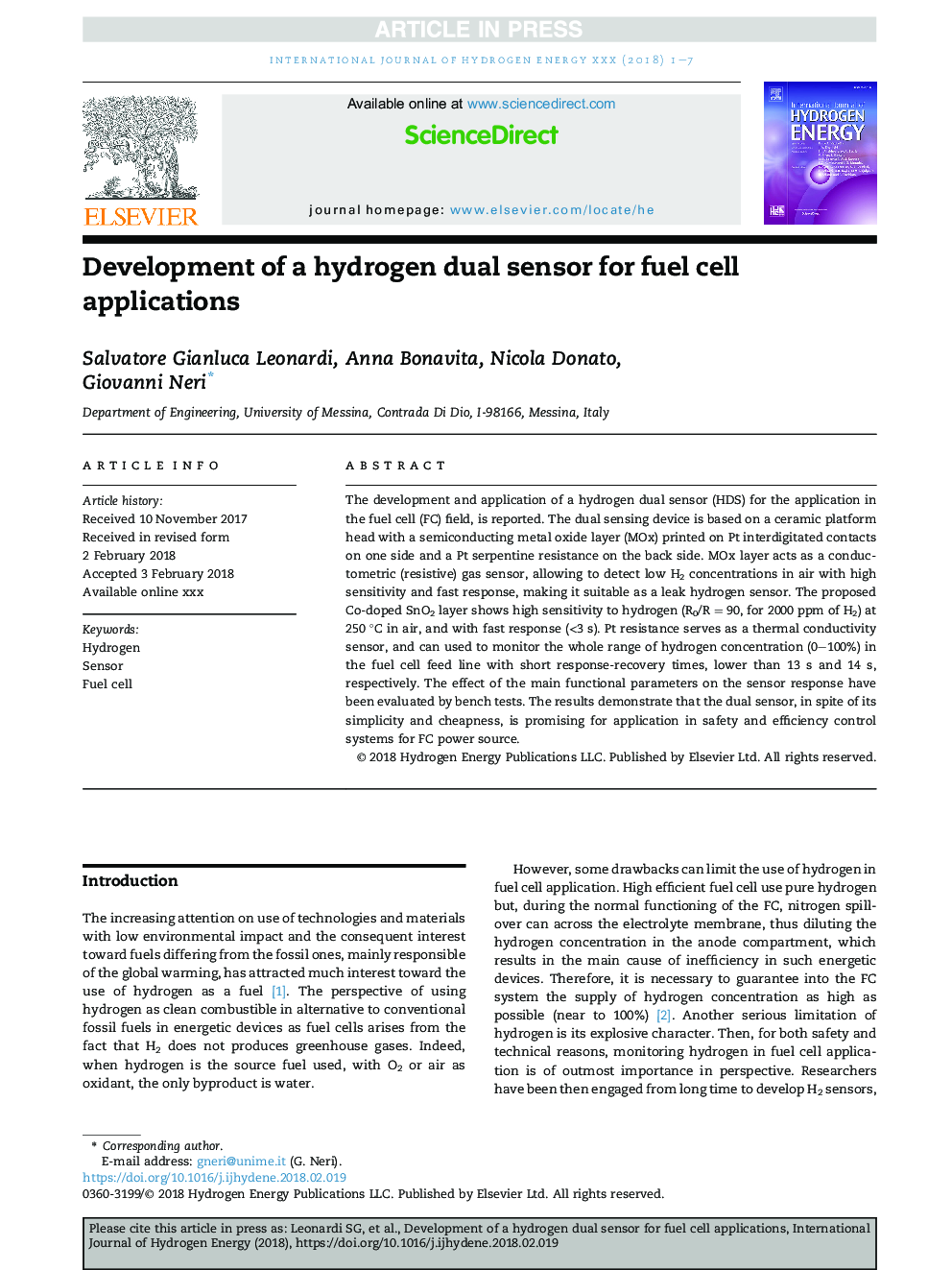| Article ID | Journal | Published Year | Pages | File Type |
|---|---|---|---|---|
| 7705632 | International Journal of Hydrogen Energy | 2018 | 7 Pages |
Abstract
The development and application of a hydrogen dual sensor (HDS) for the application in the fuel cell (FC) field, is reported. The dual sensing device is based on a ceramic platform head with a semiconducting metal oxide layer (MOx) printed on Pt interdigitated contacts on one side and a Pt serpentine resistance on the back side. MOx layer acts as a conductometric (resistive) gas sensor, allowing to detect low H2 concentrations in air with high sensitivity and fast response, making it suitable as a leak hydrogen sensor. The proposed Co-doped SnO2 layer shows high sensitivity to hydrogen (R0/R = 90, for 2000 ppm of H2) at 250 °C in air, and with fast response (<3 s). Pt resistance serves as a thermal conductivity sensor, and can used to monitor the whole range of hydrogen concentration (0-100%) in the fuel cell feed line with short response-recovery times, lower than 13 s and 14 s, respectively. The effect of the main functional parameters on the sensor response have been evaluated by bench tests. The results demonstrate that the dual sensor, in spite of its simplicity and cheapness, is promising for application in safety and efficiency control systems for FC power source.
Related Topics
Physical Sciences and Engineering
Chemistry
Electrochemistry
Authors
Salvatore Gianluca Leonardi, Anna Bonavita, Nicola Donato, Giovanni Neri,
